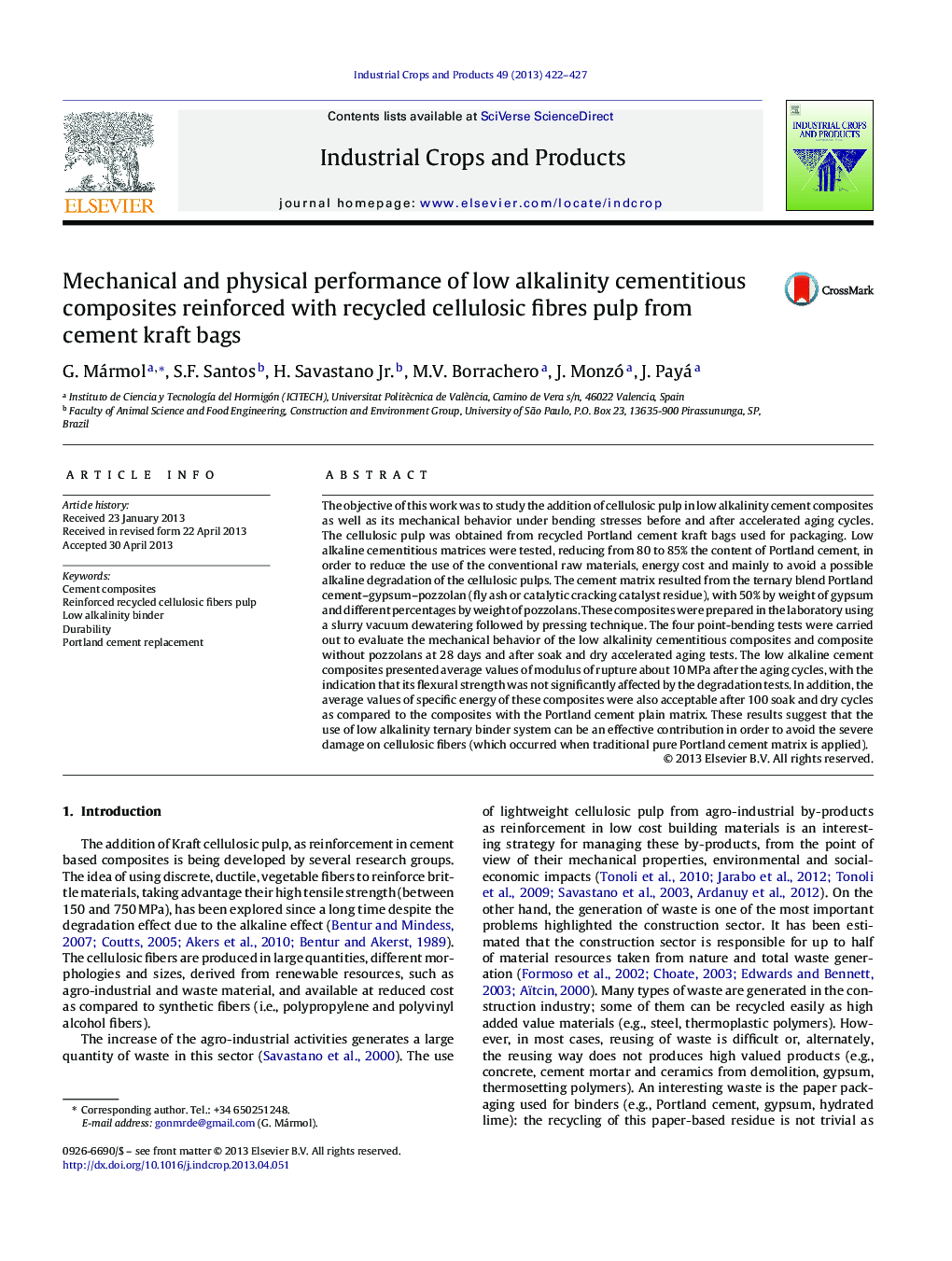| Article ID | Journal | Published Year | Pages | File Type |
|---|---|---|---|---|
| 6377492 | Industrial Crops and Products | 2013 | 6 Pages |
Abstract
The objective of this work was to study the addition of cellulosic pulp in low alkalinity cement composites as well as its mechanical behavior under bending stresses before and after accelerated aging cycles. The cellulosic pulp was obtained from recycled Portland cement kraft bags used for packaging. Low alkaline cementitious matrices were tested, reducing from 80 to 85% the content of Portland cement, in order to reduce the use of the conventional raw materials, energy cost and mainly to avoid a possible alkaline degradation of the cellulosic pulps. The cement matrix resulted from the ternary blend Portland cement-gypsum-pozzolan (fly ash or catalytic cracking catalyst residue), with 50% by weight of gypsum and different percentages by weight of pozzolans. These composites were prepared in the laboratory using a slurry vacuum dewatering followed by pressing technique. The four point-bending tests were carried out to evaluate the mechanical behavior of the low alkalinity cementitious composites and composite without pozzolans at 28 days and after soak and dry accelerated aging tests. The low alkaline cement composites presented average values of modulus of rupture about 10Â MPa after the aging cycles, with the indication that its flexural strength was not significantly affected by the degradation tests. In addition, the average values of specific energy of these composites were also acceptable after 100 soak and dry cycles as compared to the composites with the Portland cement plain matrix. These results suggest that the use of low alkalinity ternary binder system can be an effective contribution in order to avoid the severe damage on cellulosic fibers (which occurred when traditional pure Portland cement matrix is applied).
Keywords
Related Topics
Life Sciences
Agricultural and Biological Sciences
Agronomy and Crop Science
Authors
G. Mármol, S.F. Santos, H. Jr., M.V. Borrachero, J. Monzó, J. Payá,
